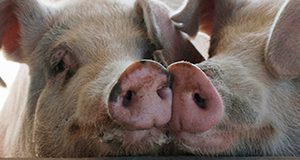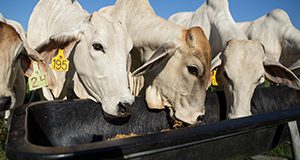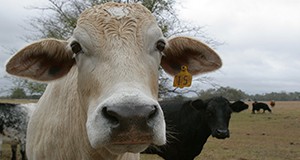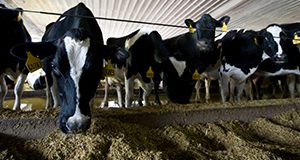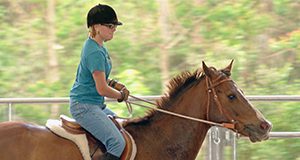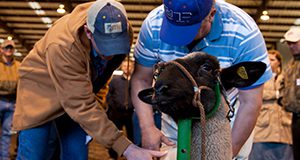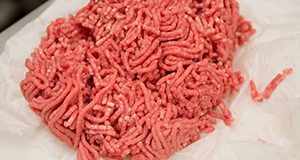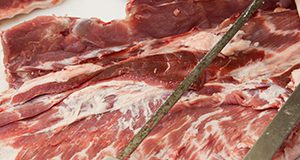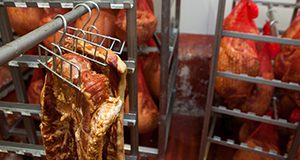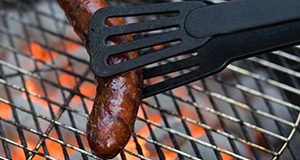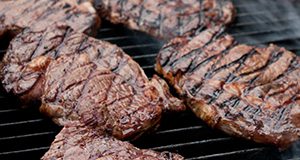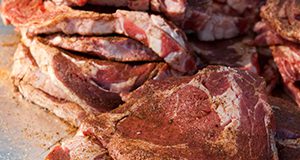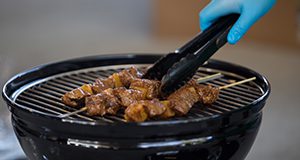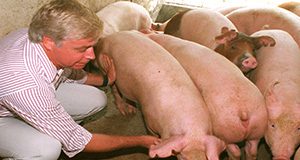This 8-page document discusses common biological, chemical, and physical hazards that may need preventive measures during the manufacture of swine feeds. Written by Taylor Langford, Morgan McKinney, Chad Carr, and Jason M. Scheffler, and published by the UF/IFAS Department of Animal Sciences, September 2019.
http://edis.ifas.ufl.edu/an357
Tag: Chad Carr
La Ley de Modernizacion para la Seguridad Alimentaria (FSMA): Controles Preventivos para los Alimentos de Animales
La Ley de Modernización de la Seguridad Alimentaria (FSMA) se convirtió en ley en enero de 2011 y se considera la reforma más amplia de las normas de seguridad alimentaria en 70 años. Primero, se establecieron las regulaciones sobre alimentos para el consumo humano luego con la contribución de la industria, la academia, y los consumidores y otras agencias, se modificaron para adaptarse mejor a la producción de alimentos para animales. En Florida, estas nuevas regulaciones se aplican a las instalaciones que fabrican, procesan, empacan o almacenan alimentos o ingredientes para animales. El objetivo principal de estas regulaciones es garantizar alimentos seguros para los animales, las personas que manejan el alimento y las personas que consumen productos derivados de animales. This 4-page document is the Spanish version of The Food Safety Modernization Act (FSMA) Preventive Controls for Animal Food. Written by Francisco Rivera, Chad Carr, and Jason M. Scheffler, and published by the UF/IFAS Department of Animal Sciences, February 2019.
http://edis.ifas.ufl.edu/an352
Antibiotic Use and Resistance for Beef Cattle Producers
Antibiotic-resistant microorganisms cause millions of illnesses and cost billions of dollars in the United States each year. This 5-page fact sheet written by Chad Carr, Matt Hersom, K. C. Jeong, Nicolas DiLorenzo, Jason Scheffler, Victoria Roberts, Gina Faniola, Stephanie Miller, Haley Denney, Nahilia Williams, and Bianca McCracken and published by the UF/IFAS Department of Animal Sciences discusses the use of antibiotics in cattle production operations and answers some common questions about antibiotics and antibiotic-resistant microorganisms.
http://edis.ifas.ufl.edu/an351
Common Hazards to Consider During Manufacturing of Feed for Beef and Dairy Cattle
This 6-page document provides a list of common hazards to consider in the manufacturing of cattle feeds. It discusses the importance of preventing hazards, methods of prevention, and common physical, biological, and chemical hazards. Written by Taylor Langford, Matthew Hersom, Luiz Ferraretto, Antonio Faciola, Chad Carr, and Jason Scheffler, and published by the UF/IFAS Department of Animal Sciences, March 2018.
http://edis.ifas.ufl.edu/an343
Risk Management for 4-H Youth Development Work: Large Animals-Horses
This 13-page publication is one in the series Risk Management for 4-H Youth Development Work. It addresses the risks involving horses at 4-H events. Written by Saundra TenBroeck, Wendy DeVito, Dale Pracht, Chad Carr, Brittani Kirkland, and Georgene Bender and published by the UF/IFAS 4-H Youth Development Department, February 2018.
http://edis.ifas.ufl.edu/4h383
Lamb and Variety Meat Retail Identification Cuts
This new poster includes all of the lamb and variety meat cuts, primals, and cooking methods that are included in the Florida 4-H Meat Judging Contest. This contest, coordinated by the Florida 4-H Animal Sciences program, develops life skills through activities related to the processing of beef, pork, and lamb, including retail identification, meat quality factors, and cooking methods. Written by Brian Estevez, Chad Carr, and Larry Eubanks, and published by the UF/IFAS 4-H Youth Development Department, December 2017.
http://edis.ifas.ufl.edu/4h381
Beef Retail Identification Cuts
This new poster includes all of the beef cuts, primals, and cooking methods that are included in the Florida 4-H Meat Judging Contest. This contest, coordinated by the Florida 4-H Animal Sciences program, develops life skills through activities related to the processing of beef, pork, and lamb, including retail identification, meat quality factors, and cooking methods. Written by Brian Estevez, Chad Carr, and Larry Eubanks, and published by the UF/IFAS 4-H Youth Development Department, December 2017.
http://edis.ifas.ufl.edu/4h380
Pork Retail Identification Cuts
This new poster includes all of the pork cuts, primals, and cooking methods that are included in the Florida 4-H Meat Judging Contest. This contest, coordinated by the Florida 4-H Animal Sciences program, develops life skills through activities related to the processing of beef, pork, and lamb, including retail identification, meat quality factors, and cooking methods. Written by Brian Estevez, Chad Carr, and Larry Eubanks, and published by the UF/IFAS 4-H Youth Development Department, November 2017.
http://edis.ifas.ufl.edu/4h379
Florida 4-H Tailgate: Smoking and Slow Cooking Meat
The Florida 4-H Poultry BBQ program has existed for years, and the program for red meat cookery has been a huge success in Tennessee 4-H. With sponsorship for the winners at the state level, the Florida 4-H Tailgate Contest program will be a success in Florida as well. This program will strive to promote enjoyable outdoor cooking experiences, encourage the incorporation of animal protein in the diet in order to combat childhood obesity, improve youth nutritional knowledge and cooking skills, and impart knowledge about safe handling and proper degree of doneness to produce safe and delicious meat dishes. This 2-page fact sheet is the fourth publication in the Florida 4-H Tailgate series, and it discusses smoking and slow cooking meat. Written by Chad Carr, Brian Estevez, Sonja Crawford, Jason Scheffler, George Baker, Ed Jennings, and Mark Mauldin, and published by the 4-H Youth Development Department, December 2016.
http://edis.ifas.ufl.edu/4h375
Florida 4-H Tailgate: Fire-Building
The Florida 4-H Poultry BBQ program has existed for years, and the program for red meat cookery has been a huge success in Tennessee 4-H. With sponsorship for the winners at the state level, the Florida 4-H Tailgate Contest program will be a success in Florida as well. This program will strive to promote enjoyable outdoor cooking experiences, encourage the incorporation of animal protein in the diet in order to combat childhood obesity, improve youth nutritional knowledge and cooking skills, and impart knowledge about safe handling and proper degree of doneness to produce safe and delicious meat dishes. This 2-page fact sheet is the third publication in the Florida 4-H Tailgate series, and it discusses fire-building. Written by Chad Carr, Brian Estevez, Sonja Crawford, Jason Scheffler, George Baker, Ed Jennings, and Mark Mauldin, and published by the 4-H Youth Development Department, December 2016.
http://edis.ifas.ufl.edu/4h374
Florida 4-H Tailgate: Meat Selection
The Florida 4-H Poultry BBQ program has existed for years, and the program for red meat cookery has been a huge success in Tennessee 4-H. With sponsorship for the winners at the state level, the Florida 4-H Tailgate Contest program will be a success in Florida as well. This program will strive to promote enjoyable outdoor cooking experiences, encourage the incorporation of animal protein in the diet in order to combat childhood obesity, improve youth nutritional knowledge and cooking skills, and impart knowledge about safe handling and proper degree of doneness to produce safe and delicious meat dishes. This 2-page fact sheet is the fifth publication in the Florida 4-H Tailgate series, and it discusses meat selection. Written by Chad Carr, Brian Estevez, Sonja Crawford, Jason Scheffler, George Baker, Ed Jennings, and Mark Mauldin, and published by the 4-H Youth Development Department, December 2016.
http://edis.ifas.ufl.edu/4h376
Florida 4-H Tailgate: Cooking Safety
The Florida 4-H Poultry BBQ program has existed for years, and the program for red meat cookery has been a huge success in Tennessee 4-H. With sponsorship for the winners at the state level, the Florida 4-H Tailgate Contest program will be a success in Florida as well. This program will strive to promote enjoyable outdoor cooking experiences, encourage the incorporation of animal protein in the diet in order to combat childhood obesity, improve youth nutritional knowledge and cooking skills, and impart knowledge about safe handling and proper degree of doneness to produce safe and delicious meat dishes. This 3-page fact sheet is the second publication in the Florida 4-H Tailgate series, and it addresses cooking safety. Written by Chad Carr, Brian Estevez, Sonja Crawford, Jason Scheffler, George Baker, Ed Jennings, and Mark Mauldin, and published by the 4-H Youth Development Department, December 2016.
http://edis.ifas.ufl.edu/4h373
Florida 4-H Tailgate: Cooking Equipment
The Florida 4-H Poultry BBQ program has existed for years, and the program for red meat cookery has been a huge success in Tennessee 4-H. With sponsorship for the winners at the state level, the Florida 4-H Tailgate Contest program will be a success in Florida as well. This program will strive to promote enjoyable outdoor cooking experiences, encourage the incorporation of animal protein in the diet in order to combat childhood obesity, improve youth nutritional knowledge and cooking skills, and impart knowledge about safe handling and proper degree of doneness to produce safe and delicious meat dishes. This 2-page fact sheet is the first publication in the Florida 4-H Tailgate series, and it discusses cooking equipment. Written by Chad Carr, Brian Estevez, Sonja Crawford, Jason Scheffler, George Baker, Ed Jennings, and Mark Mauldin, and published by the 4-H Youth Development Department, July 2016.
http://edis.ifas.ufl.edu/4h372
The Food Safety Modernization Act (FSMA) Preventive Controls for Animal Food
The Food Safety Modernization Act (FSMA) was signed into law in January of 2011 and is considered the most sweeping reform of food safety regulations in 70 years. The human food regulations were composed first and, with significant input from industry, academia, and consumer groups as well as other agencies, were then modified to better suit animal food production. In Florida, these new regulations apply to facilities that manufacture, process, pack, or hold food or food ingredients for animals. These facilities may include pet food manufacturers, renderers, ethanol distillers, feed mills, distributors, and others. The primary goal of these regulations is to ensure safe food for the animals, people who handle the feed, and people who consume the final animal products. This 3-page fact sheet discusses requirements, facilities that will most likely be expected to be in compliance, deadlines, development of a food safety plan, and preventive controls qualified individuals. Written by Jason M. Scheffler and Chad Carr, and published by the UF Department of Animal Sciences, December 2016.
http://edis.ifas.ufl.edu/an330
Risk Management for 4-H Youth Development Work: Large Animals: Livestock
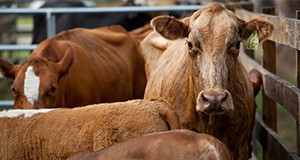 Most people involved in youth livestock exhibition are familiar with the physical risks of handling and transporting livestock, but public spectators generally need more instruction and supervision to ensure their safety and health. The Risk Management for 4-H Youth Development Work series aims to provide UF/IFAS Extension county faculty, staff, volunteers, and youth with the knowledge they need to implement best practices in risk management strategies. This 8-page fact sheet covers risks in the following categories: injuries to people, injuries to animals, property damage, biosecurity (diseases transmitted to humans and between animals), and general precautions. Written by Chad Carr, Saundra TenBroeck, Wendy DeVito, Chris Strong, Dale Pracht, and Georgene Bender, and published by the UF Department of Animal Sciences, November 2015.
Most people involved in youth livestock exhibition are familiar with the physical risks of handling and transporting livestock, but public spectators generally need more instruction and supervision to ensure their safety and health. The Risk Management for 4-H Youth Development Work series aims to provide UF/IFAS Extension county faculty, staff, volunteers, and youth with the knowledge they need to implement best practices in risk management strategies. This 8-page fact sheet covers risks in the following categories: injuries to people, injuries to animals, property damage, biosecurity (diseases transmitted to humans and between animals), and general precautions. Written by Chad Carr, Saundra TenBroeck, Wendy DeVito, Chris Strong, Dale Pracht, and Georgene Bender, and published by the UF Department of Animal Sciences, November 2015.
http://edis.ifas.ufl.edu/an321
Sous Vide Cookery: Foodservice Application for Larger, Less Tender Cuts
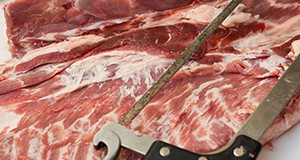 Meat with an abundance of connective tissue presents a certain challenge to cooks who want to make it more tender while still properly eliminating pathogens that cause foodborne illness. Sous vide cookery provides precise temperature control and tenderness improvement with minimal supervision throughout cooking as well as consistent, almost perfect reproducibility. This 4-page fact sheet introduces the reader to the sous vide method and covers its advantages and necessary equipment. The piece also offers tips on cooking, chilling, storing, and reheating large cuts of meat. Written by Chad Carr, Derek Griffing, Kaylie Madore, Dwain Johnson, Jason Scheffler, and João Neto, and published by the UF Department of Animal Sciences, September 2015.
Meat with an abundance of connective tissue presents a certain challenge to cooks who want to make it more tender while still properly eliminating pathogens that cause foodborne illness. Sous vide cookery provides precise temperature control and tenderness improvement with minimal supervision throughout cooking as well as consistent, almost perfect reproducibility. This 4-page fact sheet introduces the reader to the sous vide method and covers its advantages and necessary equipment. The piece also offers tips on cooking, chilling, storing, and reheating large cuts of meat. Written by Chad Carr, Derek Griffing, Kaylie Madore, Dwain Johnson, Jason Scheffler, and João Neto, and published by the UF Department of Animal Sciences, September 2015.
http://edis.ifas.ufl.edu/an320
How Do I Legally Sell Meat from Alligators, Wild Game, or My Farmed Game or Birds in Florida?
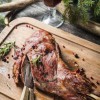 Game meats provide wholesome and nutritious animal protein, but learning the regulations (and which agency has jurisdiction over which regulations) can be burdensome for those who want to be entrepreneurial. This 4-page fact sheet is a “one-stop-shop” for Florida residents who want to sell products from alligators, wild game, or their own farmed game or birds. Written by Chad Carr, Jason Scheffler, Larry Eubanks, Ron Webb, Lee Cornman, Scotland Talley, and Steve Stiegler, and published by the UF Department of Animal Sciences, December 2014. (Photo: iStock/Thinkstock.com)
Game meats provide wholesome and nutritious animal protein, but learning the regulations (and which agency has jurisdiction over which regulations) can be burdensome for those who want to be entrepreneurial. This 4-page fact sheet is a “one-stop-shop” for Florida residents who want to sell products from alligators, wild game, or their own farmed game or birds. Written by Chad Carr, Jason Scheffler, Larry Eubanks, Ron Webb, Lee Cornman, Scotland Talley, and Steve Stiegler, and published by the UF Department of Animal Sciences, December 2014. (Photo: iStock/Thinkstock.com)
http://edis.ifas.ufl.edu/an315
How Do I Legally Sell Meat from My Own Livestock and Poultry in Florida?
 There is much interest in locally produced foods, but the federal, state, and local regulations can be confusing. This 5-page fact sheet is a “one-stop-shop” for Florida residents who want to sell meat from their own livestock and poultry. Written by Chad Carr, Jason Scheffler, Larry Eubanks, Ron Webb, Lee Cornman, Scotland Talley, and Steve Stiegler, and published by the UF Department of Animal Sciences, December 2014. (Photo: iStock/Thinkstock.com)
There is much interest in locally produced foods, but the federal, state, and local regulations can be confusing. This 5-page fact sheet is a “one-stop-shop” for Florida residents who want to sell meat from their own livestock and poultry. Written by Chad Carr, Jason Scheffler, Larry Eubanks, Ron Webb, Lee Cornman, Scotland Talley, and Steve Stiegler, and published by the UF Department of Animal Sciences, December 2014. (Photo: iStock/Thinkstock.com)
http://edis.ifas.ufl.edu/an316
Food Processing: The Meat We Eat (AN283)
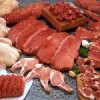 Meat processing technology is used to produce many of the foods we enjoy, such as hot dogs, hamburgers, and chicken nuggets. Recently, the media has focused on certain meat products, giving them names such as “pink slime” and “meat glue.” The names of these products might have many people wondering what we are eating and how the meat we eat is produced. Part of being a good consumer is learning about what you eat, from how the food is made to whether the food is safe. This publication discusses the facts about meat processing so you can make knowledgeable decisions about the meat you eat. This 5-page fact sheet was written by Erica L. Bub, Keith Schneider, Chad Carr, and Matt Hersom, and published by the UF Department of Animal Sciences, December 2012.
Meat processing technology is used to produce many of the foods we enjoy, such as hot dogs, hamburgers, and chicken nuggets. Recently, the media has focused on certain meat products, giving them names such as “pink slime” and “meat glue.” The names of these products might have many people wondering what we are eating and how the meat we eat is produced. Part of being a good consumer is learning about what you eat, from how the food is made to whether the food is safe. This publication discusses the facts about meat processing so you can make knowledgeable decisions about the meat you eat. This 5-page fact sheet was written by Erica L. Bub, Keith Schneider, Chad Carr, and Matt Hersom, and published by the UF Department of Animal Sciences, December 2012.
http://edis.ifas.ufl.edu/an283
Feeding Ensiled Citrus Pulp to Finishing Pigs (AN282)
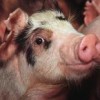 For the past six years, feed costs have continually increased and Florida has greater feed costs than the rest of the country because grain must be shipped here from where it was produced. But the Florida pork producers generally get prices above market value for their pigs because of strong demand for locally-raised foods. These Florida pork producers could become more profitable if they could significantly decrease their production costs. In Florida, pork producers have an opportunity to use citrus byproducts as a feedstuff to substantially and sustainably decrease their feed costs. This 4-page fact sheet was written by J. D. Crosswhite, N. B. Myers, A. T. Adesogan, J. H. Brendemuhl, D. D. Johnson, and C. C. Carr, and published by the UF Department of Animal Sciences, August 2012.
For the past six years, feed costs have continually increased and Florida has greater feed costs than the rest of the country because grain must be shipped here from where it was produced. But the Florida pork producers generally get prices above market value for their pigs because of strong demand for locally-raised foods. These Florida pork producers could become more profitable if they could significantly decrease their production costs. In Florida, pork producers have an opportunity to use citrus byproducts as a feedstuff to substantially and sustainably decrease their feed costs. This 4-page fact sheet was written by J. D. Crosswhite, N. B. Myers, A. T. Adesogan, J. H. Brendemuhl, D. D. Johnson, and C. C. Carr, and published by the UF Department of Animal Sciences, August 2012.
http://edis.ifas.ufl.edu/an282
